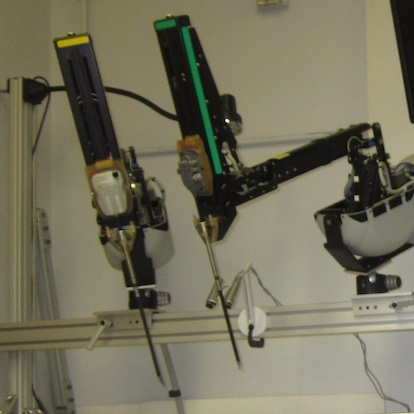Virtual Fixtures for Assisted Robotic Surgery
WPI Automation and Interventional Medicine (AIM) Lab: January-May, 2015
What if surgical robots could assist the surgeon without taking away any of the their control?

As part of a course titled "Robot Dynamics", I worked with four other students on a project at WPI's AIM Lab. Utilizing the lab's two Da Vinci surgical robot arms, we developed a system that could help guide a surgeon's hand without imposing any hard limits. By default, the system works by having the surgical manipulators exactly mimic the motions of the surgeon's hand (scaled down and with tremors filtered out). As a test case for our system, we showed that "virtual fixtures" could be defined to apply forces to the surgeon's hand based on pre-defined targets; for instance, if the surgeon needs to follow a certain curve to make a cut, the robot can apply a force to the controling hand to make following the line easier. At the same time, the fixture is "soft", and easily overcome if necessary.
Using a camera, we were able to register a target line drawn on a piece of paper and placed in the robot's workspace. Transforming that line into the robot's working coordinates, we applied forces to push the controller gently towards the line. We even showed that an operator could follow the line without difficulties with their eyes closed, using only the haptic feedback our system provided.